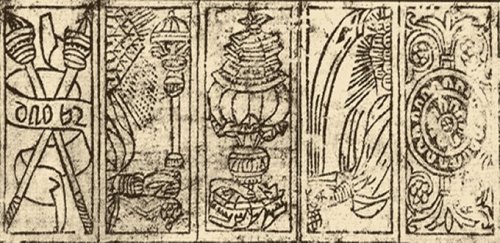The Lenormand cards are named after the famous Lenormand oracle, which was named after Mile Marie Anne Lenormand. She was a famous fortune teller and excelled in cartomancy during the late 18th and early 19th century. Her fame stemmed from many accurate cartomancy readings and predictions. She even drew the attention of rich noble people like Josephine de Beauharnais, who later became the wife of Napoleon Bonaparte. Her name is the only thing that connects with Lenormand oracle, the cardS were not designed by her. She used other devices such as necromancy, scrying, palmistry, and other divinatory methods for readings. She also used unique divinatory methods such as readings through coffee grounds and egg whites. To the extent of our knowledge, she used French Piquet cards for cartomancy. Sadly, she never described her method of interpreting the tarots even though she was a prolific writer.

Two years after the death of Mile Marie Anne Lenormand, cartomancy became very popular among a wider set of people on the internet. Grimaud, an enterprising publisher printed a deck of cards, it was named after Mile Lenormand. It was popularly known as Le Grand Jeu de Mlle Lenormand or simply as the Lenormand cards. The mechanics of reading the cards were said to be leaked by Mile Lenormands apprentice. The deck was made up of 54 cards, each compromising of a separate set of symbol and meaning. The cards held images of star pictures, Greek mythology, 22 letters (Kabbala), geomantic symbols, 7 talismans, flowers, and playing cards.

Following the popularity of these cards, many other publishers released decks under the name of Lenormand, which contained various assortments of cards from playing cards to additional symbols. A smaller concise version of the cards was released, it had 36 cards and was called Petit Jeu. During the year 1850 in Germany, the Lenormand cards were made into an easier and simpler design. Each card had a mnemonic image with a number, it had a total of 36 cards. It is also believed that these cards were based on a deck printed in 1800, it used a dice and number cards for cartomancy readings. The numbered cards had smaller playing card images overlapping a larger image in the background. It was marketed with an instruction booklet that explained the mechanics of the cards. These cards were simple to understand and still hold popularity in Europe, some western areas, and in Germany.
There are various versions of Lenormand cards, however, a standard Lenormand card deck has 36 cards and has an assortment of images like a house, a tree, a clover, a cross, a heart, amongst others. Each version of the cards has its own set of interpretations for cartomancy readings. According to Dummett, Depaulis, and Decker, these set of cards were based on a game in Nuremberg in the year 1799. This game was called ‘The Game of Hope’, the subjects and number used in this game are identical to Petit Le Normand version of the Lenormand cards. Visit our website to know more in details.